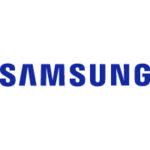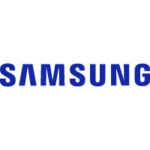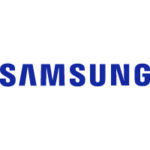
Samsung marketing communication mix utilises a number of marketing communication channels such as print and media advertising, sales promotion, events and experiences and public relations. Samsung Electronics uses these channels in an integrated manner as discussed below in more details. Advertising Print and media advertising is one of the core elements of the marketing mix extensively utilized by Samsung Electronics. One of the important key features of Samsung advertising strategy is that the multinational electronics company usually advertises its specific products such as Galaxy S and Note smartphones, but it does not advertise much Samsung brand in general . The most noteworthy media advertising campaigns include live commercials for Samsung Galaxy S 3 device on popular Jimmy Kimmel Live show in June 2012 and on Late Night With Jimmy Fallon on July and August of the same year. Moreover, partnership with Fox channel in the US to run four 30-second advertising clips during the National Football League, college football and World Series games in 2012 have been praised as efficient marketing campaigns.[1] Samsung print advertising in popular newspapers, magazines and journals have previously included direct attacks on its major competitors, notably Apple. For example, a print ad campaign titled ‘It doesn’t take a genius’ is a clever play of words on Apple’s emphasize on genius branding. The print ad compares major functionalities of iPhone5 and Galaxy S III and illustrating the superiority of Samsung’s product on several fronts.[2] Viral marketing is also extensively used by Samsung as one of the most effective advertising methods. For example, the latest 60-second viral marketing video titled “Anticipation” is a successful attempt to associate Samsung Galaxy S6 with excitement and a sense of achievement and recognition.[3] Sales Promotion Samsung uses sales promotions as a marketing tool more extensively compared to the majority of…

A deductive approach is concerned with “developing a hypothesis (or hypotheses) based on existing theory, and then designing a research strategy to test the hypothesis”[1] It has been stated that “deductive means reasoning from the particular to the general. If a causal relationship or link seems to be implied by a particular theory or case example, it might be true in many cases. A deductive design might test to see if this relationship or link did obtain on more general circumstances”[2]. Deductive approach can be explained by the means of hypotheses, which can be derived from the propositions of the theory. In other words, deductive approach is concerned with deducting conclusions from premises or propositions. Deduction begins with an expected pattern “that is tested against observations, whereas induction begins with observations and seeks to find a pattern within them”[3]. Advantages of Deductive Approach Deductive approach offers the following advantages: Possibility to explain causal relationships between concepts and variables Possibility to measure concepts quantitatively Possibility to generalize research findings to a certain extent Alternative to deductive approach is inductive approach. The table below guides the choice of specific approach depending on circumstances: Deductive approach preferred Inductive approach preferred Wealth of literature Abundance of sources Scarcity of sources Time availability Short time available to complete the study There is no shortage of time to compete the study Risk To avoid risk Risk is accepted, no theory may emerge at all Choice between deductive and inductive approaches Deductive research approach explores a known theory or phenomenon and tests if that theory is valid in given circumstances. It has been noted that “the deductive approach follows the path of logic most closely. The reasoning starts with a theory and leads to a new hypothesis. This hypothesis is put to the test by confronting it with…

Fundamental research, also known as basic research or pure research does not usually generate findings that have immediate applications in a practical level. Fundamental research is driven by curiosity and the desire to expand knowledge in specific research area. This type of research makes a specific contribution to the academic body of knowledge in the research area. Fundamental studies tend to make generalizations about the phenomenon, and the philosophy of this type of studies can be explained as ‘gathering knowledge for the sake of knowledge’. Fundamental researches mainly aim to answer the questions of why, what or how and they tend to contribute the pool of fundamental knowledge in the research area. Opposite to fundamental research is applied research that aims to solve specific problems, thus findings of applied research do have immediate practical implications. Differences between Fundamental and Applied Research Differences between applied and fundamental research have been specified in a way that fundamental research studies individual cases without generalizing, and recognizes that other variables are in constant change. Applied research, on the contrary, seeks generalizations and assumes that other variables do not change. The table below summarizes the differences between the two types of research in terms of purpose and context: Fundamental research Applied research Purpose Expand knowledge of processes of business and management Results in universal principles relating to the process and its relationship to outcomes Findings of significance and value to society in general Improve understanding of particular business or managemtn problem Results in solution to problem New knowledge limited to problem Findings of practical relevance and value to manager(s) in organization(s) Context Undertaken by people based in universities Choice of topic and objectives determined by the researcher Flexible time scales Undertaken by people based in a variety of settings including organizations and universities Objectives negotiated with…

Causal research, also known as explanatory research is conducted in order to identify the extent and nature of cause-and-effect relationships. Causal research can be conducted in order to assess impacts of specific changes on existing norms, various processes etc. Causal studies focus on an analysis of a situation or a specific problem to explain the patterns of relationships between variables. Experiments are the most popular primary data collection methods in studies with causal research design. The presence of cause cause-and-effect relationships can be confirmed only if specific causal evidence exists. Causal evidence has three important components: 1. Temporal sequence. The cause must occur before the effect. For example, it would not be appropriate to credit the increase in sales to rebranding efforts if the increase had started before the rebranding. 2. Concomitant variation. The variation must be systematic between the two variables. For example, if a company doesn’t change its employee training and development practices, then changes in customer satisfaction cannot be caused by employee training and development. 3. Nonspurious association. Any covarioaton between a cause and an effect must be true and not simply due to other variable. In other words, there should be no a ‘third’ factor that relates to both, cause, as well as, effect. The table below compares the main characteristics of causal research to exploratory and descriptive research designs:[1] Causal research Exploratory research Descriptive research Amount of uncertainty characterising decision situation Clearly defined Highly ambiguous Partially defined Key research statement Research hypotheses Research question Research question When conducted? Later stages of decision making Early stage of decision making Later stages of decision making Usual research approach Highly structured Unstructured Structured Examples ‘Will consumers buy more products in a blue package?’ ‘Which of two advertising campaigns will be more effective?’ ‘Our sales are declining for no apparent…

Conclusive research design, as the name implies, is applied to generate findings that are practically useful in reaching conclusions or decision-making. In this type of studies research objectives and data requirements need to be clearly defined. Findings of conclusive studies usually have specific uses. Conclusive research design provides a way to verify and quantify findings of exploratory studies. Conclusive research design usually involves the application of quantitative methods of data collection and data analysis. Moreover, conclusive studies tend to be deductive in nature and research objectives in these types of studies are achieved via testing hypotheses. The table below illustrates the main differences between conclusive and exploratory research design: Factor Conclusive Exploratory Objectives To test hypothesis and relationships To get insights and understanding Characteristics Information needs a clearly defined Research process is formal and structured Large representative sample Data analysis is quantitative Information needs are loosely defined Research process is unstructured and flexible Small, non-representative sample Primary data analysis is qualitative Findings Conclusive Only tentative Outcome Findings used as input to decision making Generally followed by further exploratory conclusive research Main differences between conclusive and exploratory research design It has to be noted that “conclusive research is more likely to use statistical tests, advanced analytical techniques, and larger sample sizes, compared with exploratory studies. Conclusive research is more likely to use quantitative, rather than qualitative techniques”[1]. Conclusive research is helpful in providing a reliable or representative picture of the population through the application of valid research instrument. Conclusive research design can be divided into two categories: descriptive research and causal research. Descriptive research is used to describe some functions or characteristics of phenomenon and can be further divided into the following groups: Case study; Case series study; Cross-sectional study; Longitudinal study; Retrospective study. Causal research, on the other hand, is…

Pragmatism research philosophy accepts concepts to be relevant only if they support action. Pragmatics “recognise that there are many different ways of interpreting the world and undertaking research, that no single point of view can ever give the entire picture and that there may be multiple realities”[1] Positivism and interpretivism are two extreme mutually exclusive paradigms about the nature and sources of knowledge. Many dissertation topics fall broadly within one of these two main paradigms. At the same time, there is an occasional need for seasoned researchers to “modify their philosophical assumptions over time and move to a new position on the continuum”.[2] The modified philosophical assumptions are adapted by pragmatic researchers, who usually happen to be experienced researchers. According to pragmatism research philosophy, research question is the most important determinant of the research philosophy. Pragmatics can combine both, positivist and interpretivism positions within the scope of a single research according to the nature of the research question. As it is illustrated in the table below, unlike positivism and interpretivism research philosophies, pragmatism research philosophy can integrate more than one research approaches and research strategies within the same study. Moreover, studies with pragmatism research philosophy can integrate the use of multiple research methods such as qualitative, quantitative and action research methods. Research approach Ontology Axiology Research strategy Positivism Deductive Objective Value-free Quantitative Interpretivism Inductive Subjective Biased Qualitative Pragmatism Deductive/Inductive Objective or subjective Value-free/biased Qualitative and/or quantitative Positivism, interpretivism and epistemologies[3] Pragmatist management researchers can be compared to architects. In the same way architects use whatever materials and methods needed to build the building they schemed in paper, pragmatists use whatever combination of methods necessary to find answers to research questions. At the same time, it has to be noted that pragmatists do not have to use multiple methods; rather they use…

Epistemology in a business research as a branch of philosophy deals with the sources of knowledge. Specifically, epistemology is concerned with possibilities, nature, sources and limitations of knowledge in the field of study. Alternatively, epistemology can be explained as the study of the criteria by which the researcher classifies what does and does not constitute the knowledge.[1] In simple words, epistemology focuses on what is known to be true. It is a way of thinking opposite to ontology. As a branch of research philosophy epistemology deals with the following questions: What is knowledge? Do we have knowledge? How we can gain knowledge? Epistemology is a vast field with multiple areas and issues. However, you are not expected to discuss it in great details in business studies. You need to discuss the sources of knowledge in general and the sources of knowledge used in your research in particular. In research philosophy there are many different sources of knowledge. Sources of knowledge related to business research in particular can be divided into the following four categories: Intuitive knowledgeis based on intuition, faith, beliefs etc. Human feelings play greater role in intuitive knowledge compared to reliance on facts. Authoritarian knowledge relies on information that has been obtained from books, research papers, experts, supreme powers etc. Logical knowledge is a creation of new knowledge through the application of logical reasoning. Empirical knowledge relies on objective facts that have been established and can be demonstrated. Research process may integrate all of these sources of knowledge within a single study. For example, researchers can use intuitive knowledge i.e. researchers can use their intuition to choose a specific problem to explore within research area. Authoritarian knowledge, on other hand, can be obtained during the process of literature review. Moreover, researchers can generate logical knowledge as a result of analysing primary…

Referencing is one of the most important aspects of any academic research and poor or lack of referencing will not only diminish your marks, but such practices may also be perceived as plagiarism by your university and disciplinary actions may follow that may even result in expulsion from the course. Difference between References and Bibliography It is very important to be able to distinguish between References and Bibliography. Under References you list resources that you referred to within the body of the work that also include quotations. For example, It has been noted that “time and the management of time is an important issue, and the supply of time management products – books, articles, CDs, workshops, etc. – reflects the huge demand for these products” (Walsh, 2007, p.3). Interchangeability of identical parts and a high level of straightforwardness of attaching these parts through the assembly line can be considered as revolutionary components of Fordism for the first part of the 20th century (Nolan, 2008). Under Bibliography, on the other hand, you need to list resources that you have read during the research process in order to widen your knowledge about the research area, but specific piece of information from these resources have not been used in your research in the direct manner. You do not need to refer to Bibliography within the body of the text. There are various methods of referencing such as Harvard, APA and Vancouver referencing systems. You should check with your dissertation handbook for the exact type of referencing required and follow this requirement thoroughly. My e-book, The Ultimate Guide to Writing a Dissertation in Business Studies: a step by step assistance offers practical assistance to complete a dissertation with minimum or no stress. The e-book covers all stages of writing a dissertation starting…

Samsung segmentation, targeting and positioning involves a set of activities performed in a sequence. These activities constitute the essence of Samsung marketing strategy. Segmentation involves dividing population into different groups on the basis of their common characteristics. Targeting is associated with selecting specific group(s) as consumers of products and services. Lastly, positioning refers to the selection of the marketing mix the most suitable for the target customer segment. Samsung uses the following types of positioning: Multi-segment positioning. Samsung targets more than one segments at the same time through offering several packages of products and services. For example, there are several variations of Samsung SMART Signage professional displays with different sizes, screen resolutions and functionalities and ultimately with different price tags. Thus, Samsung appeals to the needs and wants of consumers with varying financial capabilities. Imitative positioning. Samsung is known to imitative its main competitor Apple in product in design, functionalities, as well, as marketing strategy. Anticipatory positioning. Certain Samsung products such as mobile image sensors currently have low turnover. However, these product have been developed with the anticipation that the turnover will increase in the future. The following table illustrates Samsung segmentation, targeting and positioning: Type of segmentation Segmen-tation criteria Samsung target customer segment Samsung IT & Mobile Communications Samsung Consumer Electronics Samsung Device Solutions Geog-raphic Region 80 countries worldwide 80 countries worldwide 80 countries worldwide Density Urban/rural Urban/rural Urban/rural Demo-graphic Age 18-65 25-65 25-60 Gender Males & Females Males & Females Males & Females Life-cycle stage Bachelor Stage Newly Married Couples Full Nest I Full Nest II Full Nest III Empty Nest I Empty Nest II Solitary Survivor I Solitary Survivor II Bachelor Stage Newly Married Couples Full Nest I Full Nest II Full Nest III Empty Nest I Empty Nest II Bachelor Stage Newly Married…

Samsung marketing mix (Samsung 7Ps of marketing) comprises elements of the marketing mix that consists of product, place, price, promotion, process, people and physical evidence. Product Samsung Electronics products are designed in 6 global design centres and manufactured in 53 global production bases. There are 34 R&D centres worldwide that engage in new product development. As illustrated in table below, Samsung products can be divided into three divisions and there are more than one product categories under each division. Product division Product categories Consumer electronics Visual display business Digital appliances business Printing solutions business Health and medical equipments business IT & Mobile Communications Networks business Mobile communications business Device solutions Memory business System LSI business Samsung product divisions and categories Samsung products have won a number of awards and recognitions such as Best Product Award in 8 categories by BLI Summer Pick Award and Gold Award in Design by iF Design in 2015. Place. There are 53 Samsung international sales bases and the multinational electronics company uses the following sales channels: Sales and service dealers. This sales channel is associated with corporate sales. Modern retail outlets owned by the company. These are highly attractive stores with customer service representatives, as well as, employees known as Galaxy Consultants. In 2015, there were Galaxy Consultants at 158 stores under Samsung’s direct management in Korea.[1] The company has plans to expand Galaxy Consultants program beyond Korea. Distributors. Samsung has regional, territory and country distributors. Depending on the territory, size and experience of distributors, Samsung can grant distributorship rights of a single product category or all Samsung products. Online sales. Customers can choose and order Samsung products through official website of the company. Price Samsung pricing strategy can be described as the combination of the following pricing strategies depending on the product range, the…
